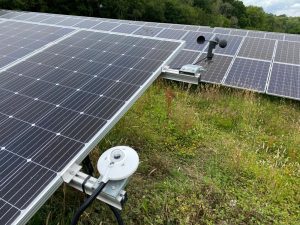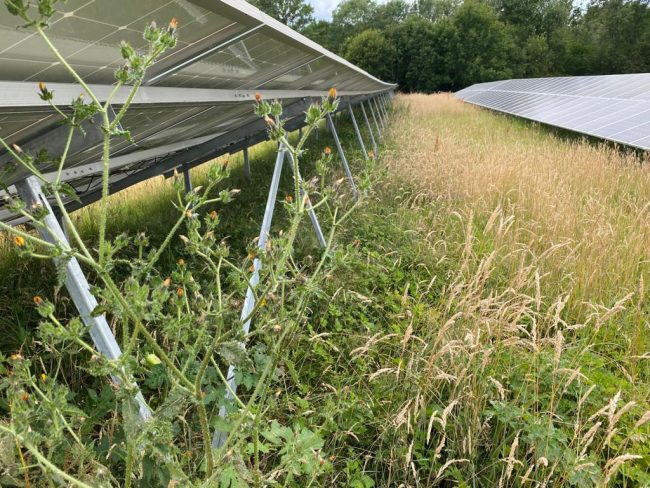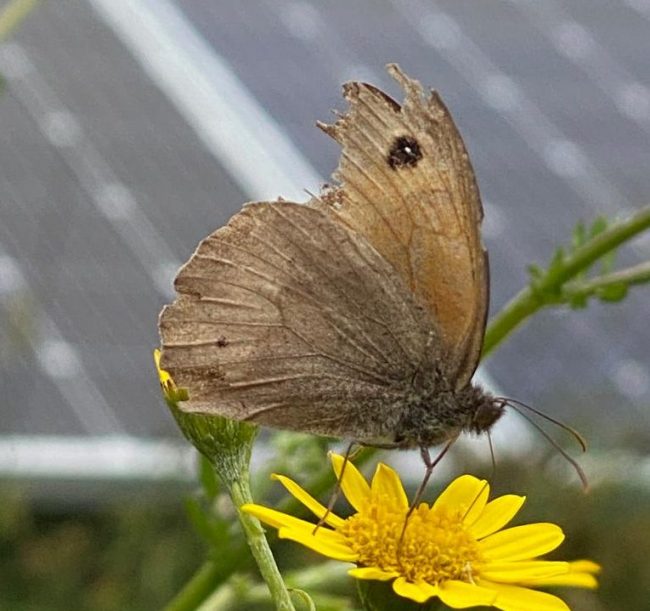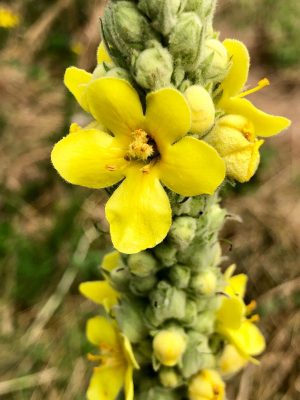PV Panels and Solar Farms boost wildlife

When we applied for permission to build a solar farm in West Sussex the planners initially worried about the impact on wildlife and insisted that we do surveys of the bats and newts, but in practice the solar panels, now installed there, have created a haven for wildlife.
Several surprising facts struck me as I walked amongst the PV panels:
- the PV panels themselves protect small mammals and birds - making shelter from rain as well as from predators
- the outer fence, mainly intended to keep out people, also keeps out deer stopping them from browsing the plants, so wildflowers do much better. Keeping out the public is also helpful for wildlife and it may well be that ground-nesting birds will establish themselves here
- because the solar panels are fixed and angled, even when the grass is cut (by sheep or mower) there are plenty of corners where the plants remain undisturbed
- as farming isn't now happening, the area remains very quiet and peaceful and free of pesticides and fertilizers
- the holes and dips in the ground don't get flattened by machinery that's good for amphibians like newts and toads

Plant life abounds in-between the PV panels
Conservationists are very supportive of solar farms not only because they reduce the use of carbon-based fuels, but due to the creation of extensive tranquil habitats. For example the Bumblebee Conservation Trust thinks that solar panels are good for bumblebees with their CEO declaring she believes "solar parks can breathe life into the bumblebee population." On a recent visit to this solar farm to take some drone footage, I spotted hundreds of bumblebees as predicted, but much more as well: dozens of butterflies (ringlets and meadow browns and lots that I didn't recognise) and a wide range of wildflowers.

Lots of different butterflies have found a home here
There was mullein, knapweed, purpletop vervain, mallow, agrimony, pineapple weed and dog rose. The builders of the solar park may not have intended to boost wildlife but it's been an important side-effect of their work.

Much of the monitoring of the output of the solar array is done remotely - the operators of the PV panels measure the intensity of the sun and the wind speeds which should allow them to work out remotely how much electricity this solar farm is making. In this case, it should be about 5 megawatts and supply the electricity needs of around 5,000 people, but if the output drops unexpectedly they will know that plants have started to grow over the panels and more grass-cutting is needed. It may be that their monitoring of the sun and wind will produce useful data for conservation / phenology researcher
Researchers looking at the wildlife impacts of solar farms confirm their biodiversity benefits. In particular, the Universities of York and Lancaster have done work which identifies ways that solar farms could be even more effective - such as planting hedges around the outside and creating wetland areas. They have developed an online tool (SPIES, Solar Park Impacts on Ecosystem Services) for helping monitor and manage solar parks for wildlife and they point out that good management could reverse the declines in endangered species like foraging bats, grey-legged partridges and yellowhammers.
Comments are closed for this post.
Discussion
Very interesting as usual
Shows how wrong well intending planners often get it wrong
Me too, I found this welcome news, and a huge consideration for future applicants interested in biodiversity for grassland, verges etc.
I found this a really refreshing read and it’s great to know that solar panel farms help in more ways than one. Maybe they would also help on the edges (sun-facing of course) of some of the woodlands for sale?
Advanced outline permission for this may also put more woodland into private hands for us to save?

There is a planning application going in close to where I live for a solar park. We live near Didcot power station, in a village. We also have a landfill next to us! The fields around our village are turning into housing estates. They even want to build houses next to the landfill. The area where they are considering putting in the solar panels is a beautiful field which used to have sheep in. The other area has trees which are just reaching maturity. It is a haven for wildlife. I am pro any eco friendly solutions, but I feel like this is something else tearing up our countryside. There are deer in the area for example. They won’t have anywhere to go soon. No trees for the owls which we hear. Badgers sets, foxes, rabbits. So where are these animals going to go when every wild space has been built on?
Karen Aldridge
2 June, 2021